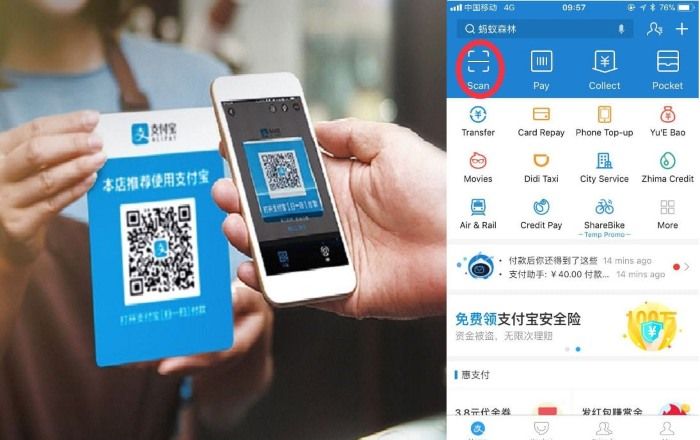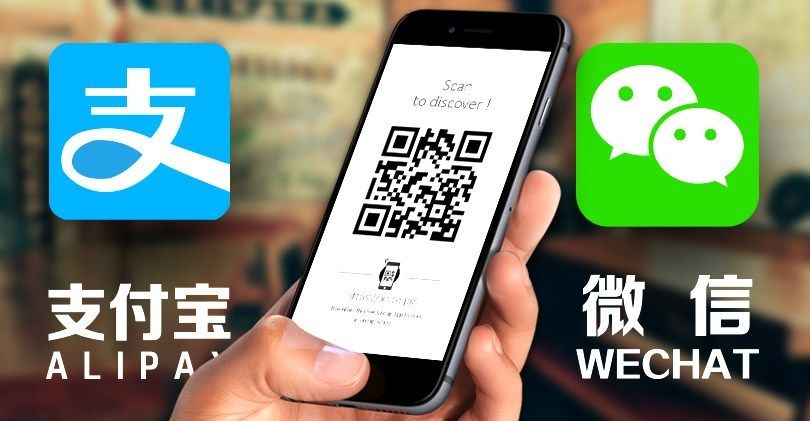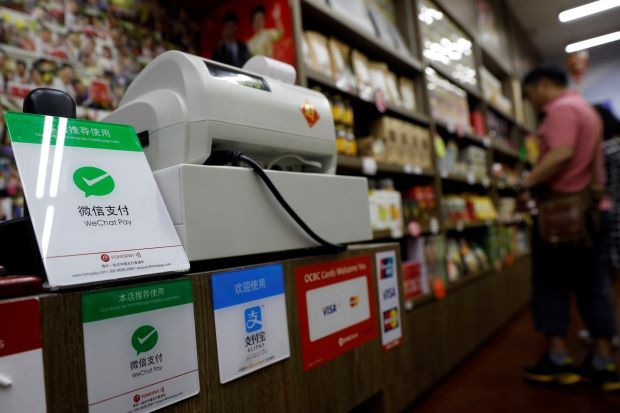We live in a world of digital payments. Paying a friend, or a store has become much more relaxed after we got our transferring into our hands, in the shape of mobile wallets. Today, more than 40% of the world are using at least one online wallet on their phone, and this has become possible in the past ten years.
However, many countries haven’t advanced into the ecommerce yet. China, on the other hand, hit US$5.5 trillion on mobile transactions, in which 74% of them were digital payments, made on mobile phones. The future of China’s mobile payment market also looked quite optimistic: predictions showed that the market transaction would reach US$6.3 trillion in 2020.

This wouldn’t have been possible without china’s one of the leading online mobile payment app: Alipay. This $150 billion company has come along a harsh way and marked its presence in the Chinese ecommerce market in a way that cant be erased forever. And here is why.
Origin of Alipay

Born in 2004, Alipay was first founded as the payment department of Taobao, the B2C program of Alibaba Group. It was right after eBay obtained Eachnet.com in China, and Taobao saw this purchase as a significant threat for its marketplace industry. To improve its competitive advantage, Taobao tried to solve the most critical point in ecommerce in China at that point — the trust within seller and buyer.
It’s one of three central third-party “digital payments” providers in the Chinese cities. (The other two are UnionPay online and Tenpay who are run by Tencent, the leading app of Chinese Internet firms.) With its 800 million customers, Alipay owns almost half the online transactions in China and has approximately 6X as many registered accounts like PayPal, 4X that of Amazon, and 1.5X that of Apple iTunes.
How is Alipay different from other apps

Alipay was designed as a platform to safeguard the web transactions between customers and merchants. Within the early stage, Alipay’s users joined their user accounts to their bank accounts. After they created the acquisition, Alipay would hold the money until customers received the merchandise. As for the merchants, they knew that the money would be there for them to gather when they sent the product. In a very society, wherever customers and merchants lacked mutual trust, Alipay’s role was necessary and crucial. Therefore, Alipay shortly became omnipresent as online searching was remodeling consumers’ consumption habits.
Alipay didn’t stand still; however, sought-after opportunities once smartphone became cheaper and mobile network services bit by bit improved in commission and stability in China. In 2008, Alipay tapped into the mobile payment business. Initially, users might use Alipay billfold to pay money for Taobao’s product and utility bills. Later in 2011, Alipay designed the QR code payment methodology that allowed offline partnering stores to settle for payment in period by scanning Associate in Nursing individual’s QR code in Alipay billfold. As a result of its convenience and cost-effectiveness, Alipay attracted two hundred,000 offline partnering stores, and 500,000 taxi partners. In 2016, Alipay’s real-name users hit 450 million, eight, and seventy-one of the transactions that occurred on the mobile finish.
Alibaba’s business model was targeted on serving little businesses so customers might relish a range of products and services. Consequently, Alipay captured a large share of China’s market since individuals had to suppose Alipay do transactions. However, the success of Alipay wasn’t only a by-product of Taobao’s quality.
Innovation added

Alipay was innovating perpetually to expand its business, with the QR code payment methodology being the foremost distinguished example. Moreover, Alipay has created its service cheaper than typical payment ways like the location (POS) machines. as an example, Associate in Nursing offline partnering store solely had to pay zero.6% per group action price to Alipay, compared to the most of one.25% for acceptive cards exploitation POS machine; to not mention that companies had to buy and maintain the device itself, acquisition a new price.
On prime of its conveniences, in 2017 alone, Alipay had invested with RMB one billion into a promotion campaign to boost shopper viscosity to its mobile app. during this promotion, customers would get a digital “red envelope” containing a random quantity of money, that may well be employed in either online or offline stores. What is more, to draw in and keep its users, Alipay created an online finance scheme at intervals the appliance itself by together with services like Yu’e Bao (money market fund platform), Sesamum indicum Credit (social credit evaluation system), and Ant-micro (micro-loan provider)
These services, at the side of Alipay billfold, remodeled Alipay from one payment application to Associate in Nursing integrated shopper and monetary scheme wherever the users were able to relish holistic services while not deed the appliance. By making such comprehensive user expertise, Alipay with success captured the users and integrated itself into their daily activities.
Alipay and China – the revolution
Alipay’s security system had additionally gained the trust of Chinese users. Per a recent survey, ninetieth of the survey respondents thought that Alipay was safe, and their information was secure with the corporate. This was a result of Alipay’s Brobdingnagian investment (US$6.5 million by 2015) in analysis and partnerships with software package firms to develop security measures to safeguard users’ cash and data.
As Alipay was reborn into hymenopterous insect monetary Services cluster, it distended its business scope from online payment to alternative financial services starting from banking to credit rating. In China alone, Alipay dominates the country’s $5.5 trillion mobile payment sector (54% of the full market share). It’s been a powerful challenger to rival payment operators like UnionPay, Visa, MasterCard, and Paypal.
Moreover, the money-market fund behind AntFinancial’s Yu’E Bao holds assets value $165.6 billion, surpassing JP Morgan’s government money-market fund ($150 billion), that wont to be the most significant investment fund. Hymenopterous insect monetary, Alipay’s financial partner has designed up a fintech scheme not solely replicating most functions of ancient banks; however additionally providing innovative financial services with prime quality, lower price, and more significant accessibility.
Where it stands in the country
Apart from serving as an essential online payment process tool for e-commerce, Alipay has become a standard payment methodology for Chinese shoppers future. The fast shift to digital payment is usually thanks to the popularisation of smartphones, as today ninety-fifth of web users in China go browsing via mobile instrumentality. Most physical stores, together with supermarkets, restaurants and garments outlets, yet as online-to-offline services like taxi-hailing and food delivering apps, settle for mobile payments offered by Alipay and WeChat Pay.

Both Alibaba and Tencent (the parent company of WeChat Pay) have signed up with numerous retailers in China and on the far side to accelerate the transition to the cashless society. For instance, the North American nation low chain Starbucks currently accepts WeChat Pay the least bit of its two,600 outlets across China, except for one restaurant at the Alibaba’s headquarters workplace in the city.
Outside China, Alipay’s mobile billfold may be employed in many countries together with the North American nation, the UK, Japan, the Asian nation, and Australia. In the UK, a variety of department shops along with Harrods and Selfridges already settle for Alipay. Exploitation mobile payment has become a stylish style for several individuals, particularly the millennials, whether or not they sleep in metropolises or little cities. It’s even become common for beggars on the streets to gift a QR code to receive mobile payment donations instead of receiving notes and coins.
Mobile payment has been a significant part and also the entryway to the complete fintech scheme as an alternative fintech services area unit offered at intervals Alipay’s or WeChat Pay’s E-wallet apps. Per one estimate, the market scale of China’s mobile payment sector was around CNY thirty-eight trillion ($5.7 trillion) in 2016, that was fifty times larger than that of the North American nation ($112 billion).

This can be partly thanks to the restricted non-cash payment choices at Chinese retailers as credit cards aren’t as well-liked as they’re within the North American nation. In distinction, China’s mobile payment system has become extraordinarily efficient and convenient, permitting numerous businesses and customers to finish transactions in a very few seconds. Moreover, throughout the Chinese twelvemonth, individuals have the tradition of giving one another red envelopes with some lucky cash within. In recent years, red envelopes are digitalized as individuals currently tend to send virtual red envelopes, an integral perform of Alipay or WeChat Pay apps, instead of old red paper envelopes.
Strength of Alipay in China
Like PayPal, Alipay may be a digital account that registers a funding supply (usually a bank account) to its account and allows payment online by keeping the payment credentials hid from the vendor. However, in contrast to PayPal, Alipay truly escrows the funds till purchaser and vendor have united that the group action has been completed and also the purchaser is happy. as a result, Alipay has had no problem getting consumer and merchant selection and is why it is most broadly used online payment system in China. It is known that 60 percent of the parcels delivered in China are from at least one of Alibaba’s enterprises. Alipay account holders can also handle offline transactions such as pay bills.
Hence, from being an official third party app for digital payments to developing 800 million digital accounts and more than 200 million mobile accounts, success has been defined for Alipay.










